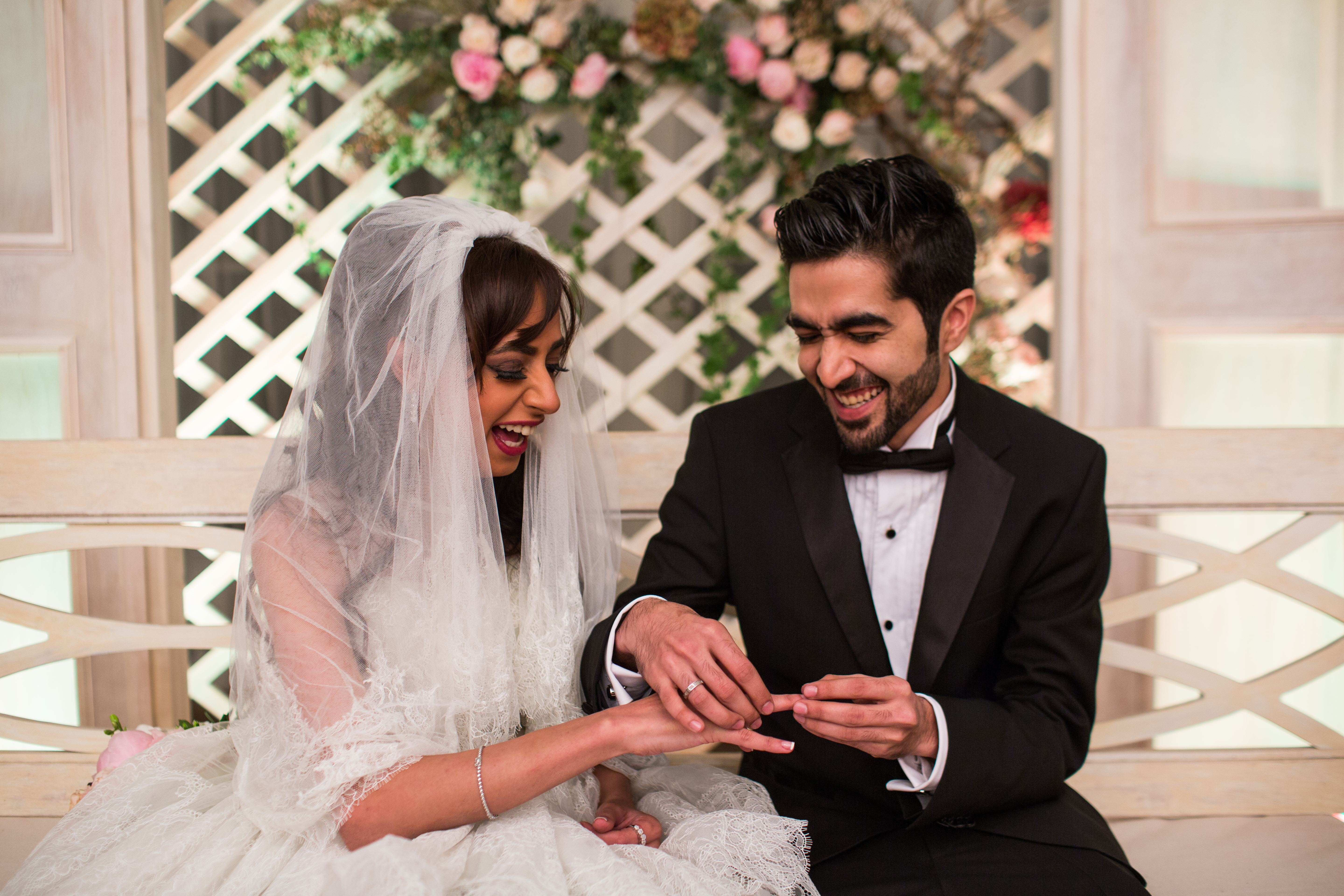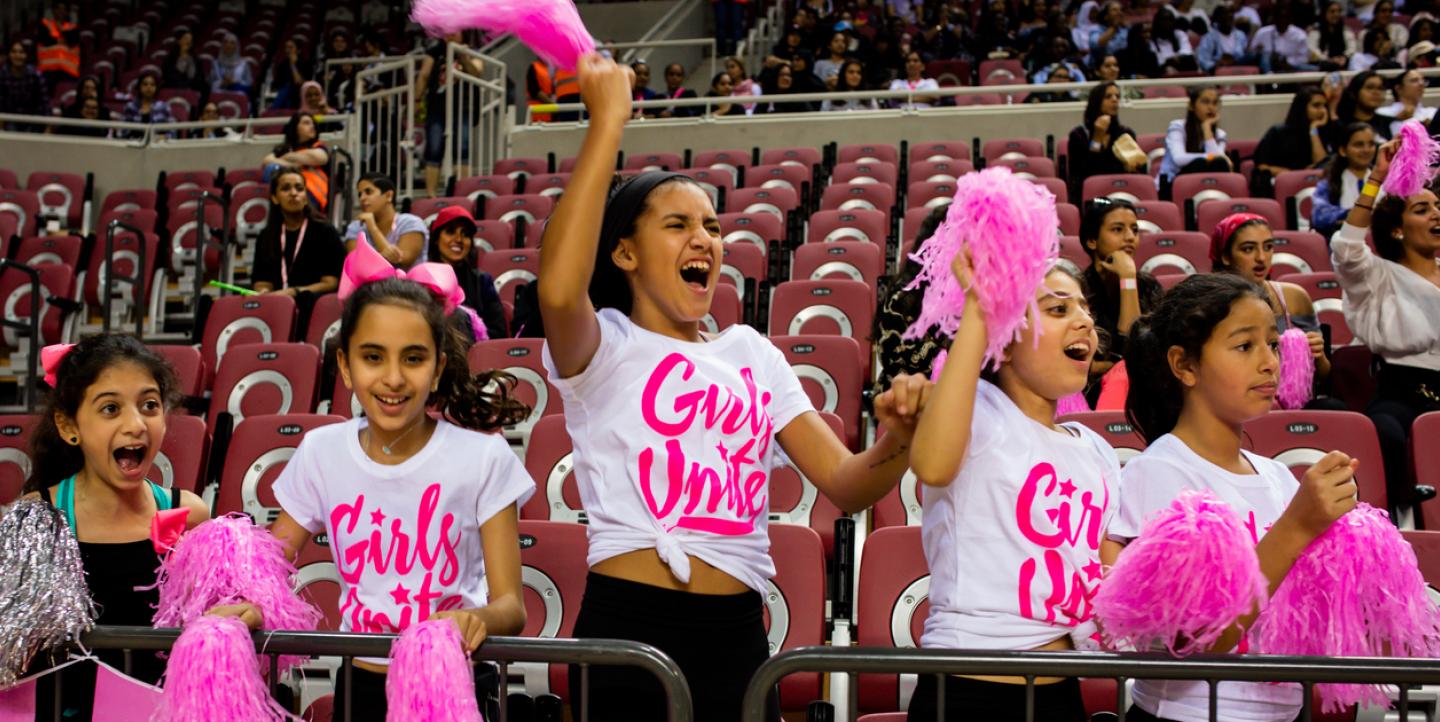Women in Saudi Arabia have experienced major changes to their freedoms over the past two years. Thanks to two landmark rulings in late 2017, Saudi women are now allowed into sports stadiums, and they can legally drive for the first time.
Along the way, Saudi photojournalist Tasneem Alsultan has managed to capture these historic moments in all their power and joy.
Alongside American photojournalist Mary Calvert, Alsultan has been recognized by the International Women’s Media Foundation as one of two honorable mentions for the 2019 Anja Niedringhaus Courage in Photojournalism Award. Eloisa Lopez, a Filipino photojournalist who focuses her work on women and religion, was awarded the top honor.
“I am really excited because this year I think all three of us are from are from our countries and we are based in our home countries,” says Alsultan. “Eloisa is young and she’s new to the industry. It’s a huge change and shift in what we are used to seeing.”
Raised in Saudi Arabia, Alsultan began her work in photography documenting weddings. “I have always been interested in social norms that no one had access to before,” she said.
Today, Alsultan is a well-respected documentarian, focusing on social issues, human rights and gender for publications such as National Geographic and The New York Times. She considers her ability to access spaces that men cannot, as well as her desire to tell Saudi stories that add nuance to dominant narratives about the country, as assets that set her work apart.
“Being from here, I feel very strong about the stories I cover, and I try to keep different people interested in the stories that come from Saudi Arabia and the neighboring countries,” she said.
IJNet spoke to Alsultan to better understand what motivates her work, the stories that interest her, and what it’s like to be a photojournalist in Saudi Arabia.
IJNet: What does it mean for you to be a woman covering these historical events, like women driving for the first time or going to stadiums?
Alsultan: It’s great. I think it’s really important. I always feel like you have to have some emotional intrigue and interest to tell that story because if there is nothing in common [between you and your subjects], then you just don't care. Whether they are from my country or from another, if there’s something common or something shared, then you feel this protectiveness over them. You feel like this is a very strong and important story.
Those stories are really important. Those people are offering me everything to share to the rest of the world, so I have to honor them.
I was looking through your Instagram, and I noticed that you have a lot of photos of weddings. Can you tell me a little about that?
Yes. It’s an ongoing project, “Saudi Tales of Love.” It sparked initially from my wedding work because I was divorced at the time when this project came to mind. As a divorced, successful wedding photographer, what else can I shed light on? We all fall in love the same way across the world. That’s not just specific to Saudi.
As soon as I shared on Instagram, I got people saying, “Oh my god, this is like our story” or “I wish I could meet a man like this.” It’s beautiful that I can connect people from all across the world, even though the story is so different from theirs because they are from Saudi.
Then I thought, “What about people who have never gotten married?” “What about people who are widows?” “What about people who are divorced?” “What if she’s divorced and remarried?” All those different, other stories — I felt that as much as they are universal, they are very specific to Saudi women. We have a lot of obstacles that no other women can experience, so I need to be active in pursuing that and sharing how important it is.

Could you tell me a bit about Rawiya, the female photography collective, you’re a member of?
[Rawiya] started with only female photographers. Last year, we did a project called "We do not Choose our Dictators." It was exhibited in Malaysia and in the U.S., in Fort Worth, Texas.
The Middle East is commonly known for a lot of upheaval — conflict — and everything is very negative. But, at the same time, none of us decide as people who governs us. Whereas in the U.S., it was Trump, and he was voted in by the people. He went on to carry out a lot of different rulings that no one now accepts, but they kind of do because he's their president. We wanted to shed light on [the fact that] in the Middle East, we do not choose our dictators, and we do not choose our rulers, but you in America had a chance and opportunity to fix it, and didn't. Then, what is the problem and how do we fix that?
We also use this collective to kind of say "Hey, women actually have more access than male photographers." We can find narratives that a man cannot work on in the same way. We can have much more intimate access, and up until recently when there are women photographer databases, people didn’t know how to reach female photographers — especially in the [MENA] region.
Society usually expects that a man has to have a real job, as an engineer, a business job or something where he has a fixed salary. Women don't, so we actually have the freedom to be freelancers because we don't have to have an office job like men do.
Were you trained in photojournalism or as a photographer?
No, and that is why I'm always saying that anyone can be something that they never thought they had a chance to work in. I was told by people that I would never be a good photographer, and that I should just quit when I started, and I just kept doing it.
I’m just someone who’s very passionate about what they do. I don't stop photographing. I always think I'm in a rush to document and collect as many images of my country as possible. There's not enough. We are just 22 million in this country, and we've never actually had a database to share all our stories. We have only been photographed by either men or outsiders, like foreign females.
Maybe in 20 years, I will get to say, “Hey, the LGBT community, for instance, existed in Saudi in the year 2018,” or “Did you know that women actually existed who were driving trucks even in the days before they had removed the ban of female drivers?” I have those images. I can say it existed. Without that, it’s nothing. There is no proof that they ever came here.
What kind of stories can you tell with a camera that you can't necessarily tell through words?
When I photograph, I'm sharing with someone who could be illiterate, who does not speak the same language that I am writing in captions, and they can still feel an emotion that I'm trying to send across. They can feel happiness or sadness. They can start thinking, “Why are they all happy?” It’s because they attended their first-ever basketball game or it was the first time they held a steering wheel they sat behind to drive.
All those emotions don't need a caption sometimes. It doesn't need a story — it can just be shared with anyone across the world. It has a huge audience that writing just doesn't always have.
This interview was edited for length.
All image credit goes to Tasneem Alsultan.
The main image was taken during the first female basketball tournament in Jeddah, Saudi Arabia after a decision allowing women to enter stadiums.


